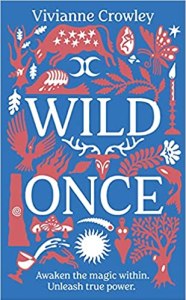
Sandhill cranes in front, Canada geese in the rear.
I stepped outdoors on Monday, March 20, and the trees and underbrush were buzzing. Like extra-loud bacon frying or radio static. It was all the little birds , revving up, not so so much singing just signally, that yes, the vernal equinox was here. I have never felt it so strongly on the day.
For reasons of weather , however, M.and I waited one more day for our Ostara pilgrimage to the San Luis Valley of southern Colorado to see the migrating sandhill cranes. (They will move on farther north, from southern Idaho into western Canada.)
Listen to them here. I love that call, especially when they pass high overhead.
 There is the official Crane Festival, but it comes too early in March to fit into my growing calendar of food and wildlife-related events that match up against an eight-station Wheel of the Year.
There is the official Crane Festival, but it comes too early in March to fit into my growing calendar of food and wildlife-related events that match up against an eight-station Wheel of the Year.
Great event with plenty of activities, but two weeks off the equinox.
We had some mountains to cross. I checked the Facebook page for the Secret Cut-off Road The word was, “Currently snowing but melting in, so maybe muddy.” We went for it.
I dropped into four-wheel-drive when the predicted “muddy” started; then it switched to soft, packed snow (Keep momentum!) and then then, Oh no!, there was a box truck sideways across the narrow road.
But I swung around past its bumper (no one there), cleared it, and charged up the last incline before the crest, a north-facing section that always holds snow longest, then up and over into potholed road dropping down through pasture land and coming out on US 160.
Just ninety minutes more, counting a detour around a little police action in Monte Vista that had closed the road out of town to the Monte Vista National Wildlife Refuge.
Taking the quickie auto tour loop out from the visitor center, we saw a flock of cranes on the ground and more overhead. From his travel crate in the back for Jeep, Marco, my Chesapeake Bay retriever, whined a few times. He could smell swamp, he could hear waterfowl — why wasn’t he being let out? Special rules today, Pup, sorry! Be patient!
Another short drive, another muddy road to a different corner of the refuge. And there they were, a huge flock, hundreds of cranes, feeding across a grassy field.
 This was worth pulling out the spotting scope and tripod — crane-watchers keep their distance to avoid disturbing them. I had not felt like wrangling both the scope and the my best camera with long lenses, so I snapped some with the little Nikon point-and-shoot. That is the photo above: just a fraction of the cranes (and Canada and snow geese) in that spot.
This was worth pulling out the spotting scope and tripod — crane-watchers keep their distance to avoid disturbing them. I had not felt like wrangling both the scope and the my best camera with long lenses, so I snapped some with the little Nikon point-and-shoot. That is the photo above: just a fraction of the cranes (and Canada and snow geese) in that spot.
And then back to Alamosa for supper, with toasts in rioja and a bone saved for Marco, and that feeling of having turned the wheel, of having broken out of routine into the chaotic spring weather, of having watched the world in its turnings.
Like this:
Like Loading...



 At 9,494 feet (2,894 m.), the early February winds are still cutting and only the lengthening day suggests any turn toward spring. M. and I, plus my Pagan cousin and her partner, fortified ourselves with food and drink in a crowded restaurant and then zipped up all zippers and headed for the Ice Castle at our designated 6 p.m. entrance time.
At 9,494 feet (2,894 m.), the early February winds are still cutting and only the lengthening day suggests any turn toward spring. M. and I, plus my Pagan cousin and her partner, fortified ourselves with food and drink in a crowded restaurant and then zipped up all zippers and headed for the Ice Castle at our designated 6 p.m. entrance time.





 This was worth pulling out the spotting scope and tripod — crane-watchers keep their distance to avoid disturbing them. I had not felt like wrangling both the scope and the my best camera with long lenses, so I snapped some with the little Nikon point-and-shoot. That is the photo above: just a fraction of the cranes (and Canada and snow geese) in that spot.
This was worth pulling out the spotting scope and tripod — crane-watchers keep their distance to avoid disturbing them. I had not felt like wrangling both the scope and the my best camera with long lenses, so I snapped some with the little Nikon point-and-shoot. That is the photo above: just a fraction of the cranes (and Canada and snow geese) in that spot.








